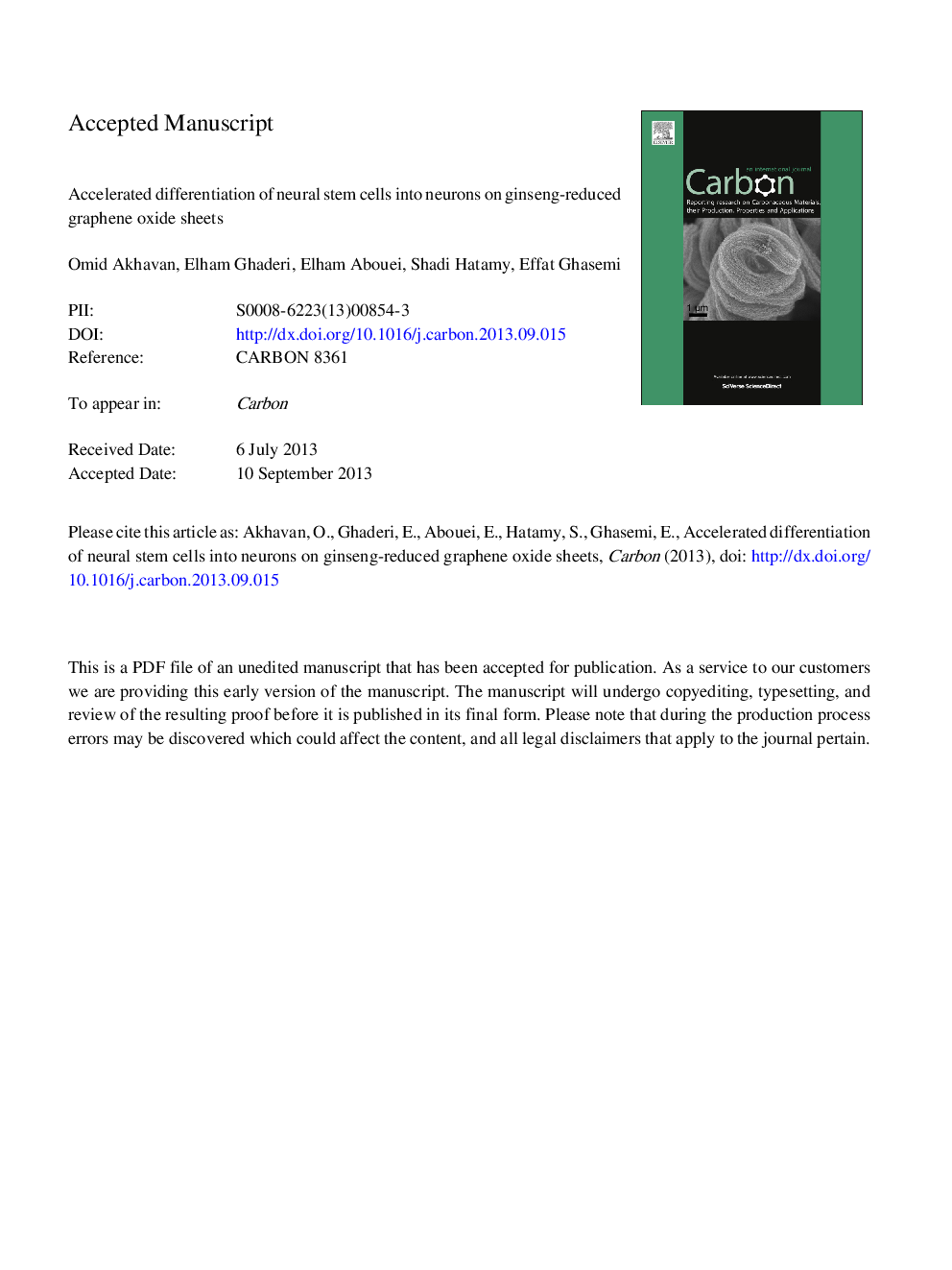| Article ID | Journal | Published Year | Pages | File Type |
|---|---|---|---|---|
| 7855553 | Carbon | 2014 | 34 Pages |
Abstract
Asian red ginseng was used for green reduction of chemically exfoliated graphene oxide (GO) into reduced graphene oxide (rGO). The reduction level and electrical conductivity of the ginseng-rGO sheets were comparable to those of hydrazine-rGO ones. Reduction by ginseng resulted in repairing the sp2 graphitic structure of the rGO, while hydrazine-rGO showed more defects and/or smaller aromatic domains. The ginseng-rGO sheets presented a better stability against aggregation than the hydrazine-rGO ones in an aqueous suspension. Whilst the hydrophobic hydrazine-rGO films exhibited no toxicity against human neural stem cells (hNSCs), the hydrophilic GO and ginseng-rGO films (as more biocompatible films) showed proliferation of the stem cells after 3 days. On the other hand, the hydrazine-rGO and especially the ginseng-rGO films exhibited more differentiation of hNSCs into neurons (rather than glia) than the GO film, after 3 weeks. The accelerated differentiation on the rGO films was assigned to their higher capability for electron transfer. Meanwhile, the better differentiation on the ginseng-rGO film (as compared to the hydrazine-rGO film) was attributed to its higher biocompatibility, more hydrophilicity and the ÏâÏ attachment of ginsenoside molecules (as powerful antioxidants) on surface of the reduced sheets.
Related Topics
Physical Sciences and Engineering
Energy
Energy (General)
Authors
Omid Akhavan, Elham Ghaderi, Elham Abouei, Shadie Hatamie, Effat Ghasemi,
